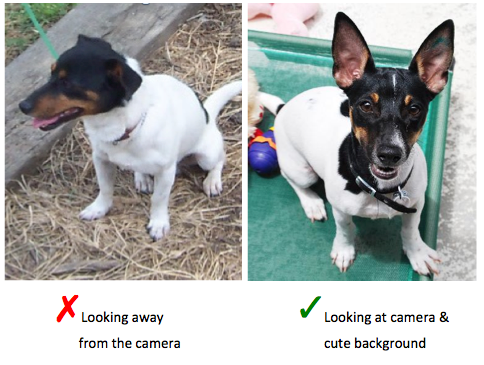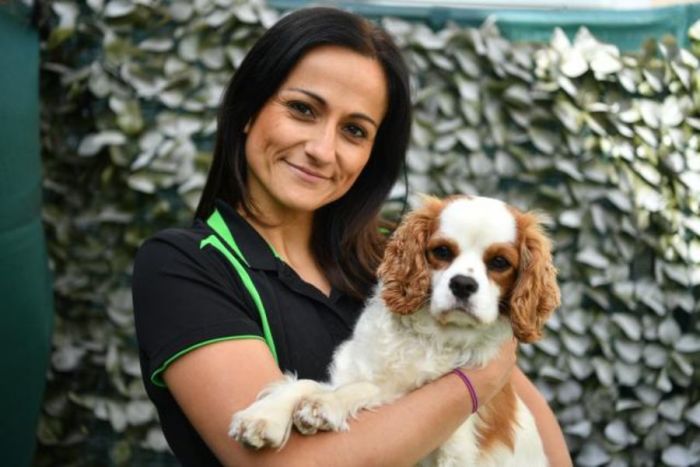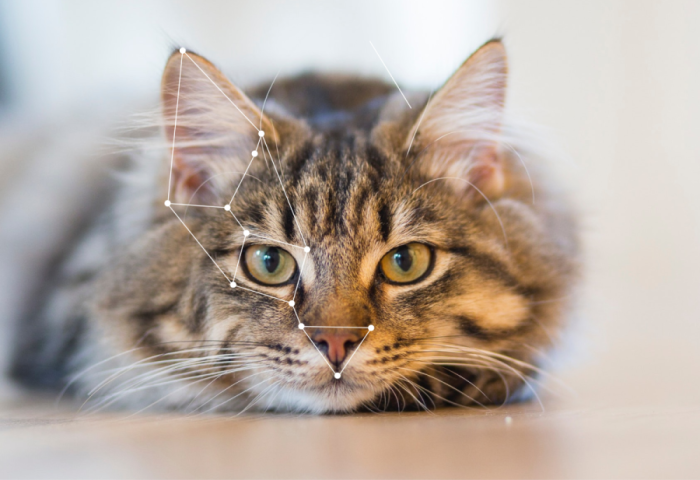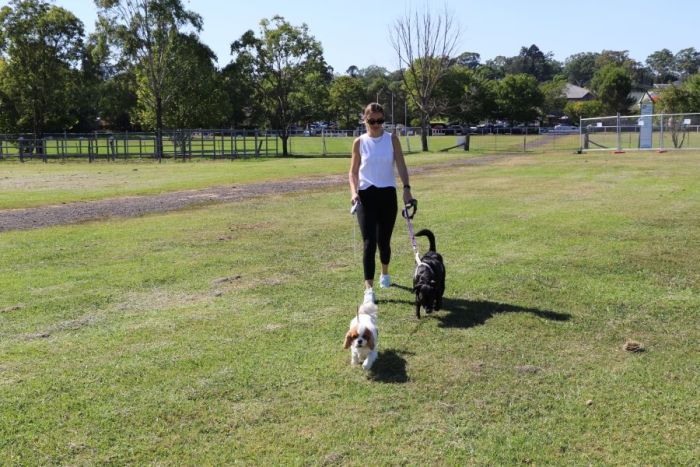 Paws For Thought: Camden Council’s Latest Initiative
Read more
Paws For Thought: Camden Council’s Latest Initiative
Read more
Never underestimate the power of a pet photo. For rescue pets, their profile photo is their ticket to the hearts and homes of potential adopters, so it’s worth investing the time and effort to get it right.
One of the best ways to get great photos is to ask a professional or enthusiastic amateur photographer to volunteer their time. Send out a request to your community or social networks and you’ll find many happy-snappers are only too pleased to help rescue pets find a home.
If you’re going for the DIY option, follow our easy step-by-step guide to snapping shots that really pop!
1. Get two people on the job
Two pairs of hands and eyes are better at getting pets to really work it for the camera. Get an assistant to handle and coax the pet to pose while you snap away.
For cats, have your assistant sitting draped in fabric, holding the cat still in their lap. For dogs, get your assistant to hold the lead, feed them treats, make smooch noises or, if it’s a fenced area, throw a ball.
2. Get out of the kennels
Get your dogs out of the kennels and into the sunlight where they can truly shine. A dog behind bars or in a cage can send out all the wrong messages. People may assume that the dog is aggressive or can’t be trusted. It also doesn’t show the dog in their best light, obscuring happy smiles and making even the sleekest coats seem dull.
Using lawns and greenery as a background is great for balancing light in all conditions. If you don’t have access to these, use a plain wall, blanket or bed outside. Avoid cluttered, messy or dirty backgrounds that will distract the eye.
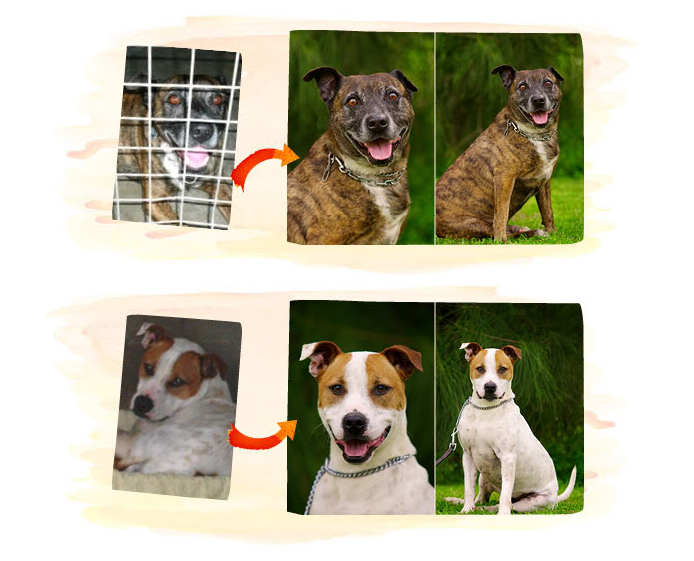
3. Avoid the ‘zombie eyes’
In flash photography, pets’ eyes turn out red or green for the same reason humans get red-eye – the light is simply reflecting off of the back of eye when the pupils are dilated. Shooting your photos outside in natural light will avoid the dreaded ‘zombie eye’ effect and allows the soul shine through.
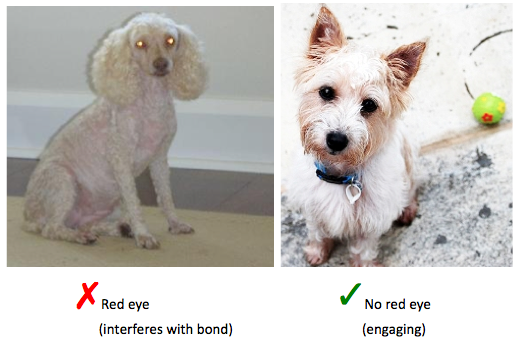
4. Beware of the black hole
When photographing black or dark coloured pets, choose a well-lit area with a contrasting background colour. Grass is particularly good at balancing light, and sand or light foregrounds create highlights in their eyes and smile.
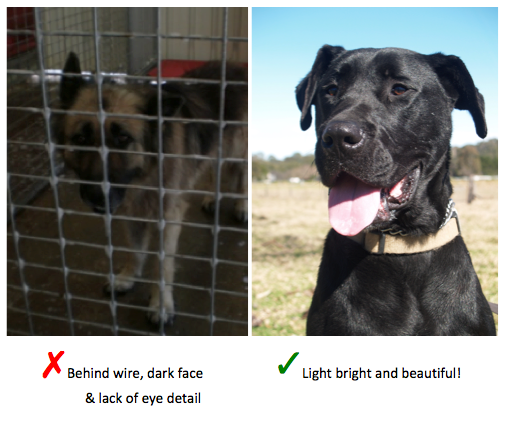
5. Grab their attention with props
There is something very special about pets making eye contact with humans – it makes us feel connected. So, when taking your photos, make sure the pet is facing the camera and focusing their attention on you. This is easier to achieve with dogs than other animals, but food treats, toys and objects that make an interesting noise will tempt pretty much any animal. For a simple homemade prop, fill a paper bag with a handful of rice or dried beans and give it a shake to get their attention.
By holding these objects next to the camera lens, just out of range, you’ll get the pet looking straight at you with their best ‘begging eyes’.
Placing colourful props in photos is also a good way to catch the eye. A bright collar or bandana can work a treat (rumour has it, red or pink is the best). Or perhaps include a favourite a toy or comfy bed in the picture – but don’t over-clutter the shot. Keep it simple.
If the pet you’re photographing has a unique personality trait that people will find fun and endearing, turn it into a theme for your photos. For example, some dogs go ballistic for balls or bubbles, others might have a favourite teddy.
6. Get on their level
Crouching or lying down on your front to get on eye-level with the pet creates a much more engaging photo than one that’s taken looking down or from a distance. You can even experiment with some creative angles – looking up at the pet as you snap away.
7. Put on a happy face
Dogs in particular have very expressive faces, and by capturing their ‘happy face’ you’ll instantly give them adoption appeal. An open mouth and smiling eyes makes them look super friendly and can easily be achieved by engaging them in a little play and run-around before you snap their portrait.
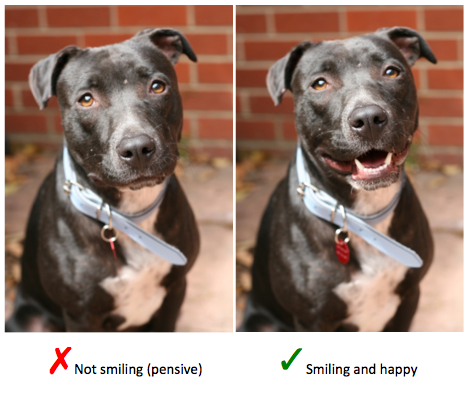
8. Give yourself plenty of time
The quickest way to ruin a pet photo is to rush it and force the pet into doing something it doesn’t want to do. Allow at least 30 minutes for each of your subjects and up to an hour if you’re shooting in a studio or an environment the pet is not familiar with. Give them time to feel comfortable with the situation and relax in your company. That way you’ll get them looking their best, natural and happy!











































